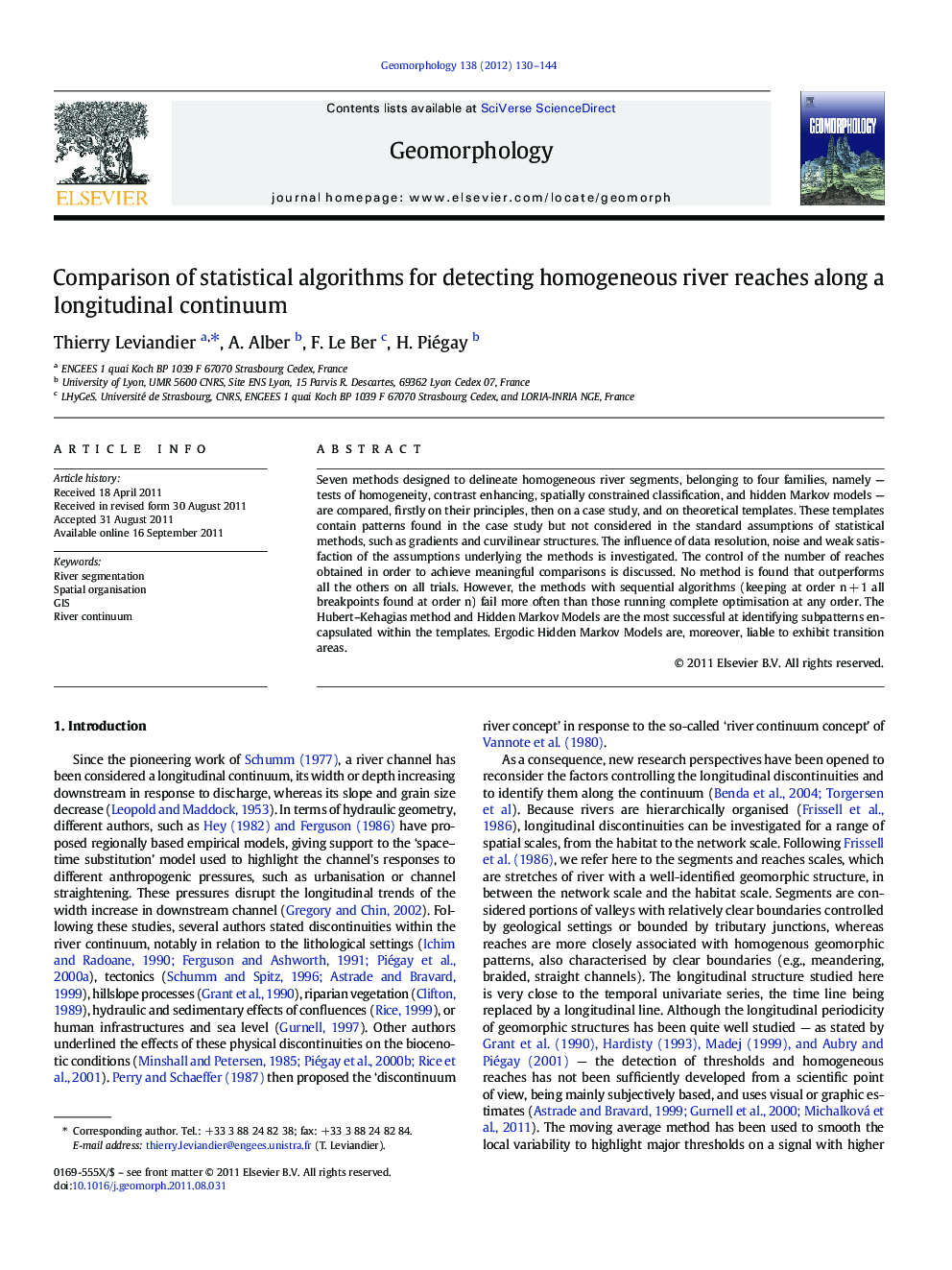| کد مقاله | کد نشریه | سال انتشار | مقاله انگلیسی | نسخه تمام متن |
|---|---|---|---|---|
| 4685353 | 1349485 | 2012 | 15 صفحه PDF | دانلود رایگان |

Seven methods designed to delineate homogeneous river segments, belonging to four families, namely — tests of homogeneity, contrast enhancing, spatially constrained classification, and hidden Markov models — are compared, firstly on their principles, then on a case study, and on theoretical templates. These templates contain patterns found in the case study but not considered in the standard assumptions of statistical methods, such as gradients and curvilinear structures. The influence of data resolution, noise and weak satisfaction of the assumptions underlying the methods is investigated. The control of the number of reaches obtained in order to achieve meaningful comparisons is discussed. No method is found that outperforms all the others on all trials. However, the methods with sequential algorithms (keeping at order n + 1 all breakpoints found at order n) fail more often than those running complete optimisation at any order. The Hubert–Kehagias method and Hidden Markov Models are the most successful at identifying subpatterns encapsulated within the templates. Ergodic Hidden Markov Models are, moreover, liable to exhibit transition areas.
Figure optionsDownload as PowerPoint slideHighlights
► We compare methods designed to delineate homogeneous river segments.
► We build templates containing patterns found in real cases.
► The criteria to achieve meaningful comparisons are discussed.
► We study the influence of data resolution and noise.
► Some methods are found more error prone, regarding the detection of these patterns.
► The HMM method is liable to exhibit transition areas.
Journal: Geomorphology - Volume 138, Issue 1, February 2012, Pages 130–144